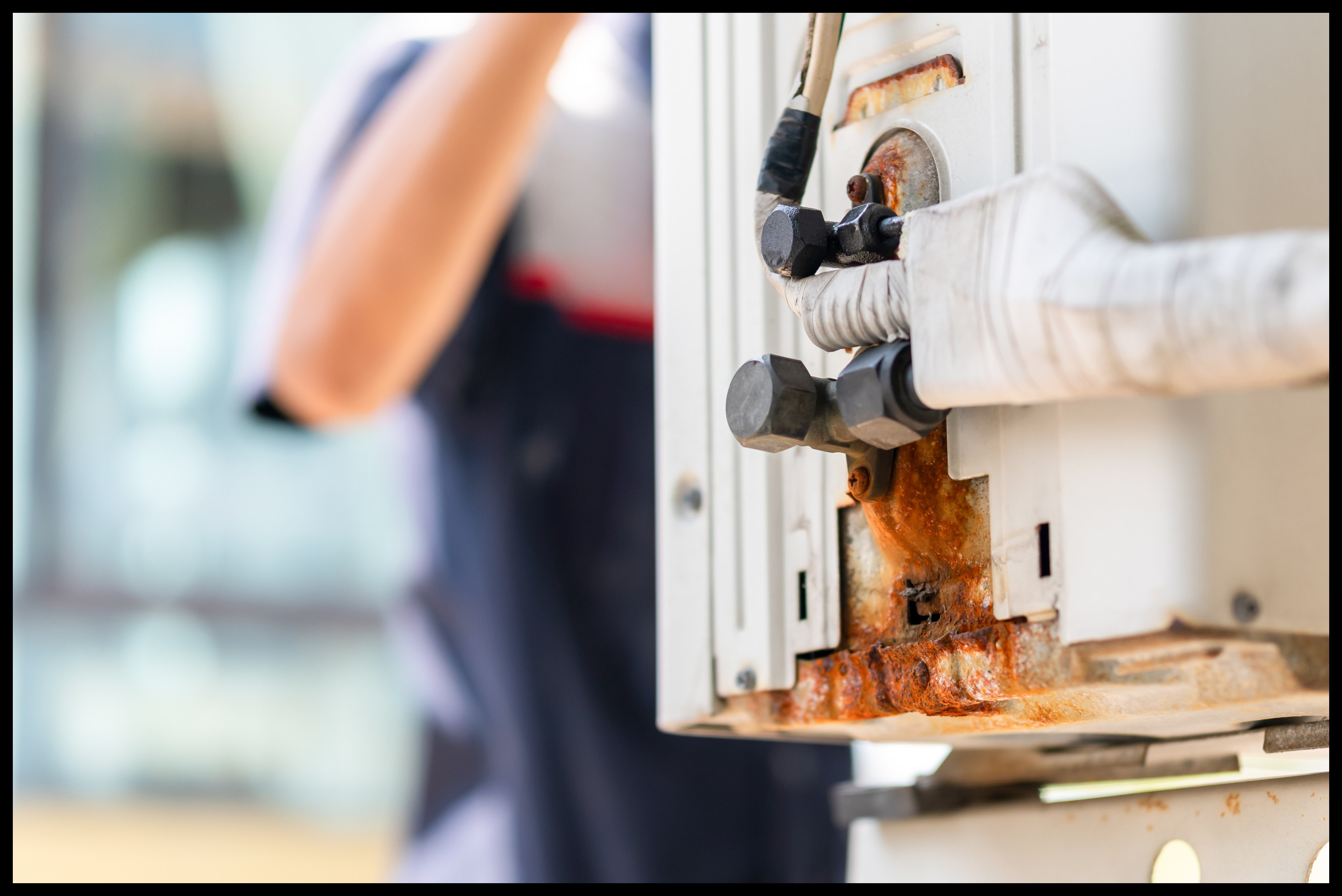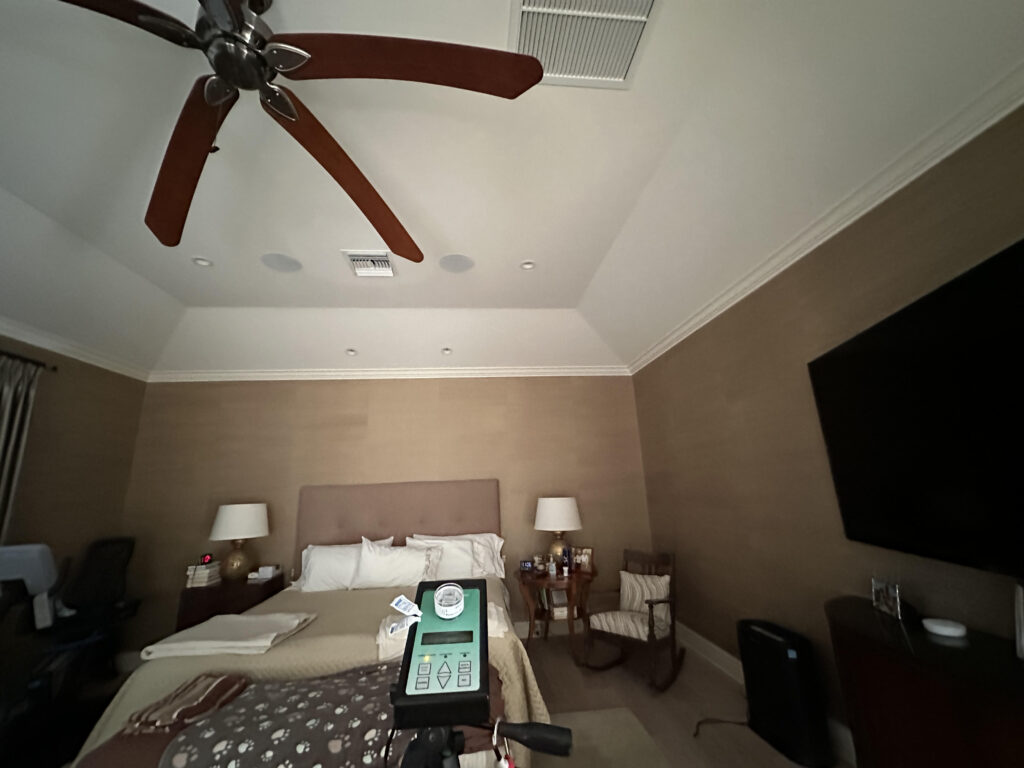Introduction
Finding dripping water from your air conditioner can be alarming. Not only does it signal a malfunction, but it also raises concerns about potential mold growth in your home. In this article, we’ll explore why your inside air conditioner might be leaking water, the risks of mold, and what steps you can take to address the issue.
Why Is My Air Conditioner Leaking Water?
Several factors can cause your air conditioning unit to leak water.
1. Clogged Condensate Drain Line
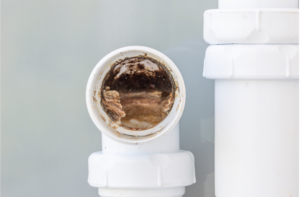
The condensate drain line removes the moisture your AC extracts from the air. Over time, this line can clog with dirt, dust, or even mold, resulting in the air conditioner unit leaking water. When blocked, water backs up and can leak around the indoor unit, leading to puddles and potential water damage.
2. Dirty Air Filters
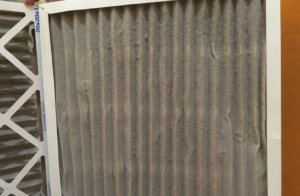
Dirty filters restrict airflow, causing the evaporator coil to freeze. When it melts, the excess water may overflow the drain pan, leading to water leaking from your air conditioner unit and reducing efficiency. This makes your AC work harder to cool your home.
3. Damaged or Rusty Drain Pan
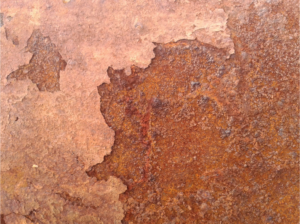
Older units may have damaged drain pans, allowing water to escape and leak onto surrounding areas, increasing moisture levels and mold risk.
4. Low Refrigerant Levels
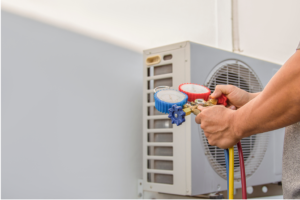
Low refrigerant levels can cause the evaporator coil to freeze. When this ice melts, it can overwhelm the drain system, causing water dripping from the AC unit indoors.
Can AC Leaks Cause Mold Growth?
When your air conditioning unit starts leaking water, it creates a moist environment ideal for mold growth. Standing water around your AC provides the necessary moisture, and combined with building materials (like drywall or insulation), it sets the stage for mold to thrive. As your HVAC system operates, it can spread mold spores, affecting your indoor air quality and potentially compromising the duct system.
Why the Location of Your AC Unit Matters for Mold Prevention
The placement of your AC unit plays a crucial role in determining the potential for mold growth. Certain locations and setups are more vulnerable to water damage and mold than others.
- AC Unit in the Attic: If your AC unit is located in the attic, leaks can become especially problematic. When water drips from the unit, it often falls directly onto attic drywall, creating ideal conditions for mold. Over time, this moisture can seep into surrounding drywall and insulation, resulting in extensive mold growth that may go unnoticed until it spreads.
- AC Unit on a Wooden Box: Placing an AC unit on a wooden box is also a setup prone to mold. The wood acts as an organic material, providing the nutrients mold needs to grow. Even small leaks can result in moisture seeping into the wood, making it a prime spot for mold to take hold and spread.
- AC Unit on a Metal Coffin Box: Positioning an AC unit on a metal coffin box is generally the best option for reducing mold risk. Metal does not provide a food source for mold, and this setup typically minimizes moisture absorption. However, if leaks persist and water drips onto the floor or nearby drywall, mold growth can still occur along the surrounding walls and baseboards.

Signs of Mold Growth Due to AC Leaks
Mold resulting from water leaks in your AC unit can lead to noticeable signs:
- Musty odors near your AC unit or vents
- Visible mold around the AC unit, vents, or ductwork
- Increased allergy or asthma symptoms among occupants
- Discoloration on walls or ceilings near the AC unit, signaling moisture and mold growth
Why the Location of Your AC Unit Matters for Mold Prevention
The placement of your AC unit plays a crucial role in determining the potential for mold growth. Certain locations and setups are more vulnerable to water damage and mold than others.
- AC Unit in the Attic: If your AC unit is located in the attic, leaks can become especially problematic. When water drips from the unit, it often falls directly onto attic drywall, creating ideal conditions for mold. Over time, this moisture can seep into surrounding drywall and insulation, resulting in extensive mold growth that may go unnoticed until it spreads.
- AC Unit on a Wooden Box: Placing an AC unit on a wooden box is also a setup prone to mold. The wood acts as an organic material, providing the nutrients mold needs to grow. Even small leaks can result in moisture seeping into the wood, making it a prime spot for mold to take hold and spread.
- AC Unit on a Metal Coffin Box: Positioning an AC unit on a metal coffin box is generally the best option for reducing mold risk. Metal does not provide a food source for mold, and this setup typically minimizes moisture absorption. However, if leaks persist and water drips onto the floor or nearby drywall, mold growth can still occur along the surrounding walls and baseboards.
What Should You Do If Your AC Is Leaking Water?
If you find water leaking from your air conditioner unit, act quickly. Turn off the unit to prevent further leakage and check for visible clogs in the condensate drain line. Replacing air filters can also help maintain airflow and prevent coil freezing. However, the most effective solution is to contact a professional who can pinpoint the cause and provide a safe fix. Prompt repairs not only resolve immediate issues but also help prevent future mold growth.
For a thorough approach to handling AC leaks and preventing mold, it’s recommended to consult an indoor air quality specialist. These professionals can help detect subtle issues that may be causing your AC to overflow. They can also assess if mold growth has spread to other areas of your home, including the HVAC duct system. If the water overflow has been ongoing, mold spores can travel through the ductwork, impacting indoor air quality and potentially spreading mold throughout the home. An air quality specialist will identify these risks and recommend solutions to protect your home and health.
Preventing Future AC Leaks and Mold Issues
Regular maintenance and proactive measures can help prevent future leaks and mold issues. Scheduling routine HVAC maintenance keeps the system efficient, and periodically flushing the condensate drain line with a vinegar solution prevents clogs. Monitoring indoor humidity with a hygrometer and keeping it between 30% and 60% creates an environment that discourages mold.
How Green Fox Air Can Help
At Green Fox Air, we understand the urgency of addressing AC leaks and preventing mold growth. Our certified technicians offer comprehensive inspections to identify and fix leaks effectively. If mold is present, we provide safe removal and remediation services. Our preventative maintenance plans ensure your AC system remains efficient and leak-free.
Conclusion
An air conditioning unit leaking water can lead to severe mold problems, impacting your health and home. By understanding the causes and acting quickly, you can prevent mold growth and keep your AC unit operating effectively.

